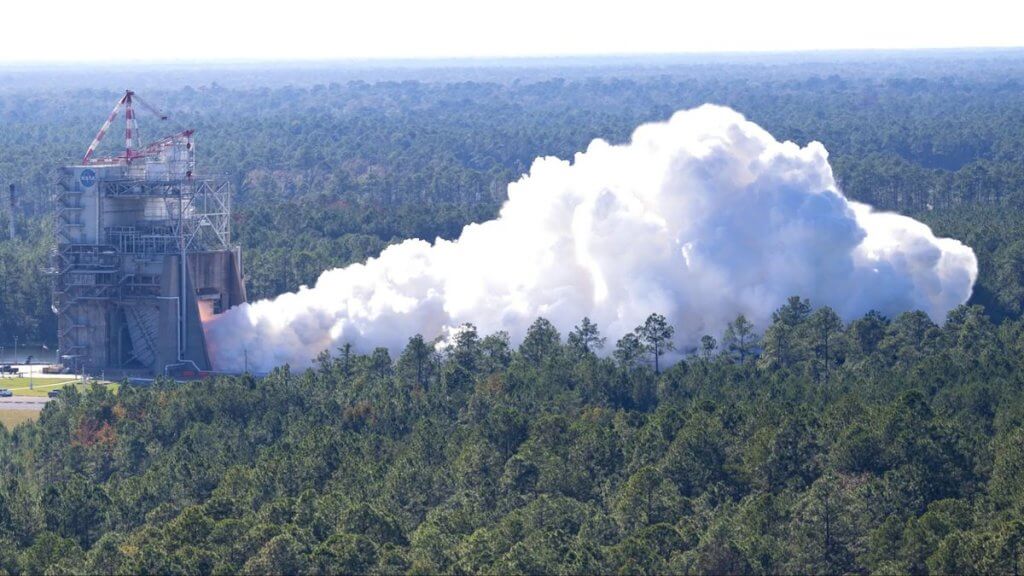NASA kicked off the final certification series for its Artemis moon-rocket engines with a dramatic “hot fire” test this week.
NASA will begin using repurposed RS-25 space shuttle engines to fly astronauts to the moon with its Artemis program. Then the new hotfire series, starting Wednesday (Oct. 17), aims to continue certifying an updated RS-25 line of engines that will start flying on the Artemis 5 mission late in the 2020s. Four RS-25s power the core stage of each Space Launch System (SLS) rocket, a key piece of Artemis hardware.
The RS-25 developmental design for engine E0525 passed its first hotfire on Wednesday, kicking off an ambitious series of 12 tests planned through 2024. “The test series will collect data on the performance of several new key engine components, including a nozzle, hydraulic actuators, flex ducts and turbopumps,” NASA officials wrote in an Oct. 3 update.
Each hotfire series puts a different RS-25 engine through its paces; another RS-25 was certified in June following its own set of 12 tests.
Related: Watch NASA test fire new and improved Artemis moon rocket engine (video)
Live footage from NASA’s Stennis Space Center in Mississippi showed smoke and fire successfully flowing out of the RS-25 for 550 seconds (more than nine minutes), which was the full planned duration of Wednesday’s test. The test included bringing the power up to the level required during a normal SLS launch. The duration was slightly longer than a nominal SLS core-stage burn, which lasts 500 seconds.
The tests will aid the certification of SLS missions starting with Artemis 5, which will fly no earlier than 2029 but may push into the 2030s depending on the progress of earlier missions. Artemis 2 will bring four astronauts around the moon in 2024, while Artemis 3 aims to put astronauts down near the lunar south pole in late 2025 or 2026, provided SpaceX‘s Starship landing system is ready in time. Artemis 4 will attempt another landing in 2028.
The lead SLS engine contractor is Aerojet Rocketdyne, an L3Harris Technologies company, while Boeing is building the SLS.
The engines aren’t the only thing being tested for future missions. For example, in September, engineers at NASA’s Marshall Space Flight Center in Huntsville, Alabama finished a subscale booster motor test. SLS uses twin solid-rocket boosters to provide additional thrust during liftoff. The test is examining an alternate booster design for missions after Artemis 8.

